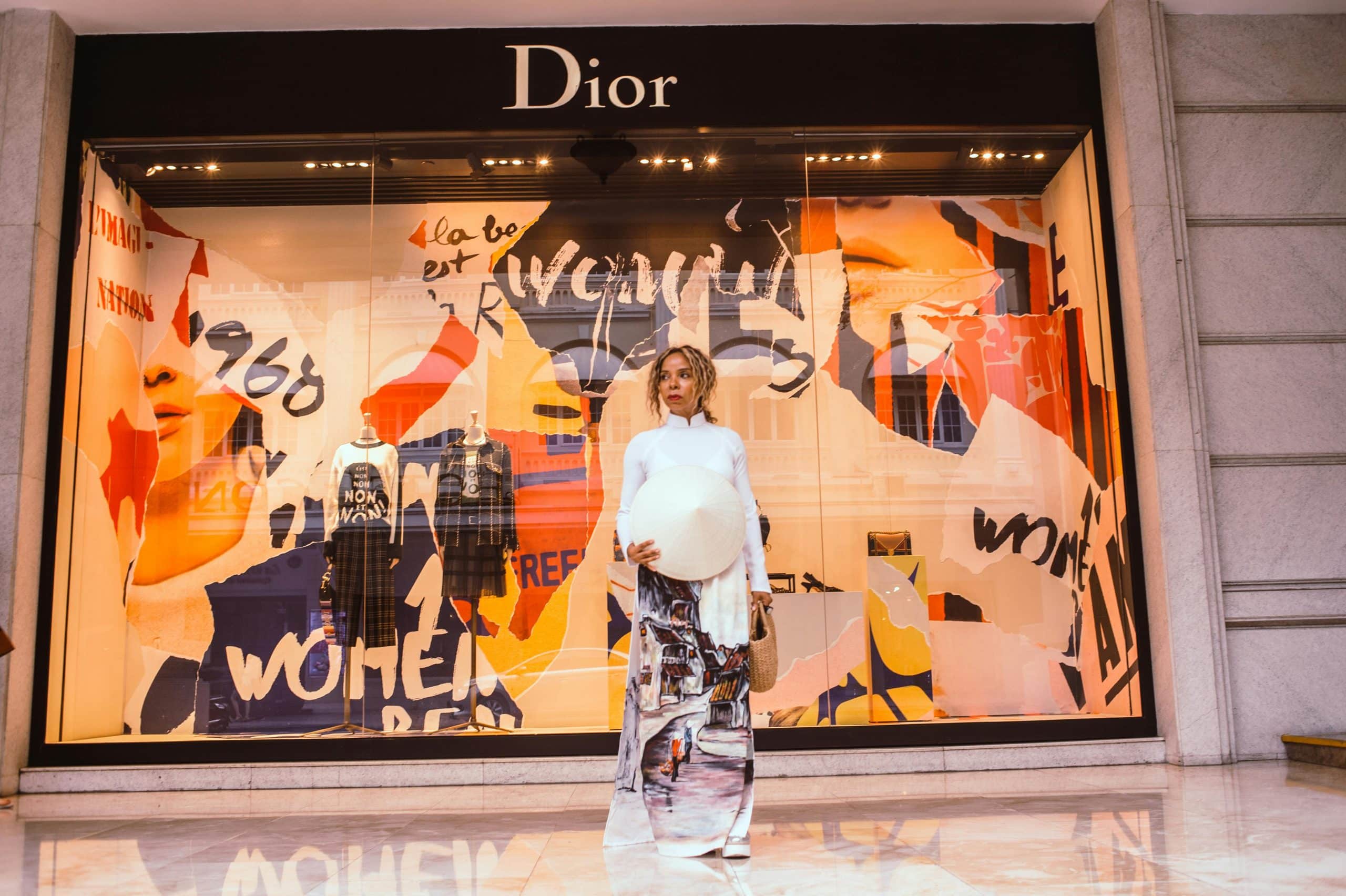How can UK’s fashion brands use AR to provide virtual try-on experiences?

The fashion industry is witnessing a transformation as digital technologies like augmented reality (AR) and virtual reality (VR) are revolutionising the way customers shop and interact with products. In this context, UK's fashion brands are looking for innovative ways to leverage these technologies and provide a unique shopping experience for their customers. One such idea is to use AR for virtual try-on experiences. But how can they do it? This article will explore this question and shed light on the potential of AR in the fashion industry.
Augmented Reality: A Virtual Game-changer for Fashion Industry
Augmented reality is fundamentally reshaping the fashion industry by enhancing brand-customer interactions and enabling new digital experiences. This technology superimposes a digital layer onto the physical world, thereby providing an enhanced view of reality. This has tremendous potential in the fashion retail sector, where it can be used to create interactive and immersive shopping experiences.
Dans le meme genre : How to create a content marketing plan that aligns with UK’s cultural values?
AR allows customers to virtually try-on clothing items, reducing the need for physical fitting rooms and making online shopping more convenient. This not only improves the overall shopping experience but also helps reduce returns and exchanges—problems that plague the online fashion retail industry.
Fashion brands can develop AR apps or integrate AR features into their existing apps. For instance, a customer can use their smartphone camera to scan a QR code on a product or catalogue, and the AR application will overlay the item on their digital image. This way, customers can see how a piece of clothing would look on them without physically trying it on.
Cela peut vous intéresser : How to use data-driven insights for enhancing marketing strategies in UK’s beauty industry?
The Potential of AR in the Online Shopping Experience
The benefits of AR in retail are tangible. It adds a new dimension to the shopping experience, enhancing customer engagement and driving sales. In a world where online shopping is becoming the norm, AR offers a unique value proposition: the ability to virtually try on products before buying.
With AR, consumers can see how clothes, shoes or accessories look on them, all from the comfort of their own home. They can try different sizes, colours, and styles, and make more informed purchasing decisions. This also helps brands to improve their product descriptions and visuals, making the online shopping experience more efficient and enjoyable.
One major advantage of augmented reality is that it bridges the gap between the online and physical retail experiences. By simulating the in-store fitting room experience, AR technology can help alleviate one of the main pain points of online shopping. This can be a game-changer in the post-COVID-19 retail landscape, where safety and convenience are paramount.
Creating a Virtual Try-On Experience
A virtual try-on experience involves the use of AR technology to superimpose a digital image of a product onto the consumer's body, allowing them to visualise how a product looks on them. This technology has been used in various sectors, including eyewear and jewellery, and is now making its way into the clothing industry.
Firstly, brands need to create a digital twin of their products—a three-dimensional digital model that accurately represents the physical product. These digital twins can then be superimposed onto the consumer's body using AR technology.
Brands can also leverage body scanning technology to create a virtual avatar of the consumer. This avatar can then be used as a model for the virtual try-on experience. Furthermore, machine learning algorithms can be employed to accurately predict how a garment will fit based on a consumer's measurements.
By combining these technologies, brands can create a virtual try-on experience that is not only immersive but also highly accurate and personalised.
Engaging Customers with Augmented Reality
Beyond the virtual try-on experience, AR can also be used to engage customers in other ways. For instance, brands can use AR to tell a story about their products or to create interactive marketing campaigns.
One way to do this is through AR filters, such as those available on Instagram. These filters allow users to virtually try on products, share their experiences with their followers, and even purchase the products directly from the app. This not only promotes the brand's products but also encourages social sharing and word-of-mouth advertising.
Brands can also use AR to enhance their in-store experiences. For instance, in-store AR displays can provide additional product information, offer styling tips, or even suggest matching accessories. This can turn a simple shopping trip into an immersive, interactive experience.
Augmenting the Future of Fashion Retail
As the fashion industry continues to evolve, the integration of AR technology will likely become the norm rather than the exception. Brands that are quick to adopt this technology will be able to provide a superior shopping experience, differentiate themselves from their competitors, and attract more customers.
However, implementing AR technology requires a significant investment, both in terms of time and resources. Brands will need to invest in AR development platforms, 3D modeling tools, body scanning technology, and machine learning algorithms, among other things. They will also need to train their staff to use these tools effectively and continuously update their AR offerings to keep up with changing consumer preferences.
Overall, augmented reality offers a promising avenue for fashion brands to innovate and enhance their customer experiences. By leveraging this technology, UK's fashion brands can move towards a future where shopping is not just a transaction, but a fun, interactive, and personalised experience.
AR in Action: Real-time Virtual Fitting Rooms
As the fusion of augmented reality and fashion continues to evolve, several notable fashion brands are already pioneering the use of AR for virtual fitting experiences.
For instance, luxury fashion house Louis Vuitton has developed an AR app that allows customers to virtually try on their products. The app uses a customer's smartphone camera to overlay Louis Vuitton's products onto the customer's body, creating a real-time virtual fitting room experience. This not only gives customers a glimpse of how the product might look on them but also offers an engaging and interactive shopping experience which sets the brand apart.
Top tech companies are also stepping into the virtual fashion arena. Gucci, for instance, partnered with Snapchat to allow users to try on their sneakers using AR technology right from the social media platform. This highlights another key aspect of AR technology: its ability to integrate seamlessly with social media platforms to provide a shared, interactive experience that can boost brand visibility and customer engagement.
This use of AR for real-time virtual fitting is a critical development in the fashion retail industry. As more brands adopt this technology, it will likely become a key component of the online shopping experience, providing customers with a convenient and personalised shopping experience.
Concluding Thoughts: A New Reality for the Fashion World
The integration of augmented reality into the fashion industry presents a promising and exciting future for both brands and consumers. AR is poised to revolutionise the way we shop, transforming it from a transactional process into a personalised, interactive experience.
The use of AR for virtual try-on experiences, in particular, offers significant benefits. It provides a solution to a common issue faced by online shoppers: the inability to try on products before buying. By allowing customers to visualise how a product looks on them in real time, AR can enhance the online shopping experience, reduce returns, and drive sales.
Moreover, the ability of AR to integrate with social media platforms offers an additional avenue for brands to increase visibility and engage with customers. Brands can leverage this technology to create interactive marketing campaigns, tell their product stories, and even allow customers to share their virtual try-on experiences with their followers.
However, the adoption of AR in the fashion industry is not without challenges. It requires significant investment in technology, training, and continuous updates to keep up with changing consumer preferences and advances in technology. But the benefits - improved customer experience, increased sales, and differentiation from competitors - make it a worthwhile investment.
In conclusion, augmented reality holds a wealth of potential for the UK's fashion brands. By embracing this technology, brands can navigate the digital fashion landscape with confidence, establishing themselves as innovators in a rapidly evolving industry. As we look to the future, it's clear that AR will play a pivotal role in defining the next chapter of fashion retail.
